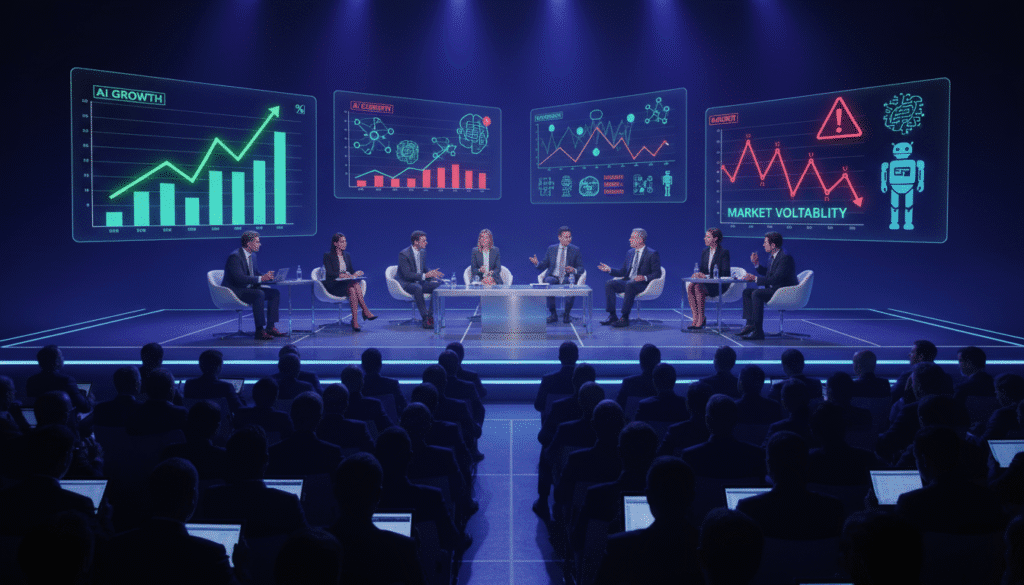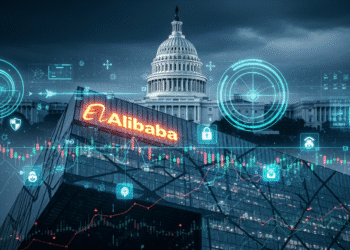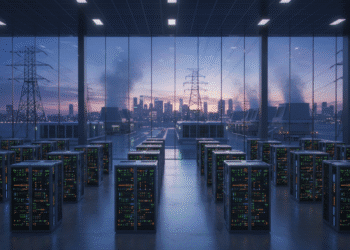Industry insiders are split on whether artificial intelligence investment has reached dangerous territory and what it means for the future of technology

The artificial intelligence industry is having a moment of reckoning. As billions pour into AI infrastructure and valuations soar to dizzying heights, a growing chorus of voices from tech CEOs to legendary investors are asking the uncomfortable question: Are we in a bubble?
The answer, it turns out, depends on who you ask. And surprisingly, some of those who say “yes” couldn’t be happier about it.
The Warnings Begin
At the Web Summit tech conference in Lisbon this November, something unusual happened. Tech executives the very people building and profiting from the AI boom started admitting they’re worried about a bubble forming in their own industry.
“I think the evaluations are pretty exaggerated here and there, and I think there is signs of a bubble on the horizon,” Jarek Kutylowski, CEO of German AI firm DeepL, told CNBC.
His concerns were echoed by Picsart CEO Hovhannes Avoyan, who pointed to a troubling trend. “We see lots of AI companies raising … tremendous valuations … without any revenue,” he said. The market, he explained, values smaller startups with “just some noise and vibe revenue” a playful term referring to companies being backed despite having minimal sales.
These aren’t isolated concerns. According to a Stanford University report, AI investment in the U.S. reached a staggering $109.1 billion in 2024. That’s twelve times higher than China’s investment and twenty-four times higher than the UK’s.
Enter Michael Burry
If there’s one person whose warnings about bubbles carry weight, it’s Michael Burry. The investor famously profiled in “The Big Short” for predicting the 2008 housing collapse has returned from a two-year social media silence with a stark message: the AI bubble is real, and it’s built on questionable accounting.
Burry’s latest target? The way major tech companies are reporting their AI-related expenses. He accused companies like Meta and Oracle of understating depreciation expenses on their AI chips and infrastructure essentially making their profits look better than they actually are.
The numbers are eye-popping. Burry estimates that Big Tech will understate depreciation by $176 billion between 2026 and 2028, inflating reported profits by 26.9% at Oracle and 20.8% at Meta.
His warning came with a cryptic social media post showing his character from “The Big Short” movie lying on the floor surrounded by papers. The caption? “Me then, me now. Oh well. It worked out. It will work out.”
Shortly after posting, Burry quietly deregistered his investing firm, Scion Asset Management, effectively stepping away from managing outside money. Some analysts interpreted this as him stepping away “from a game he believes is fundamentally rigged.”
The Depreciation Dilemma
So what’s this depreciation issue all about? It’s actually pretty straightforward and potentially explosive.
When tech giants like Microsoft, Meta, and Oracle build AI data centers, they buy tens of billions of dollars worth of GPUs, servers, and cooling systems. Normally, these assets lose value quickly, which cuts into profits. But recently, many companies have quietly extended how long they claim these machines will last from roughly three years to as many as six.
That simple accounting change lets them spread out their costs and report fatter earnings now. The problem? Technology is actually becoming obsolete faster, not slower. Nvidia now releases new chips every 12 to 18 months instead of every two years.
It’s like trying to run the latest video editing software on a five-year-old laptop. Sure, it might boot up, but it’s going to struggle. Old chips face the same reality they don’t stop working, but they quickly lose their economic value as newer, faster models render them functionally obsolete.
The “Good Bubble” Crowd

Here’s where things get interesting. Not everyone who admits there’s a bubble thinks it’s a bad thing.
Lyft CEO David Risher put it bluntly: “Let’s be clear, we are absolutely in a financial bubble. There is no question, right? Because this is incredible, transformational technology. No one wants to be left behind.”
But Risher argues there’s a crucial difference between the financial bubble and the industrial reality. “The data centers and all the model creation, all of that is going to have a long, long life, because it’s transformational. It makes people’s lives easier. It makes people’s lives better.”
Dan Gardner, CEO of digital creative agency Code & Theory, compared the moment to the dot-com boom of 2000. “It is a bubble, and it’s not a bubble,” he said. Yes, there will be wasted capital and people will lose money. But just like that earlier crash produced Amazon and Google trillion-dollar companies that changed the world this AI bubble could birth the next generation of transformative businesses.
The Demand Defense
Then there’s a third camp: those who insist this isn’t a bubble at all because demand simply outstrips supply.
Brad Smith, president of Microsoft, told Fortune his company has “more demand than supply” from customers. “We have an ongoing pipeline of demand and needs, and we see steady growth, and we’re encouraged by where things are going.”
Emily Fontaine, global head of venture capital at IBM, acknowledged the massive investment flowing into AI—$160 billion year-to-date in the U.S. alone, compared to $104 billion in 2024. But she pointed to rising enterprise adoption, which has jumped from 26% to 43% in recent months.
Ami Badani, head of strategy at chipmaker ARM, which partners with Nvidia, said demand is so strong that they simply can’t make chips fast enough. “Even today, you look at demand and that exceeds supply, and there’s an insatiable amount of demand and appetite for where we need to get to,” she explained.
The $4 Trillion Question
The scale of investment is almost incomprehensible. A report from venture capital group Accel showed that the buildout of new AI data center capacity is forecast to reach 117 gigawatts by 2030. That translates to about $4 trillion worth of capital expenditure over the next five years.
To pay back that investment, about $3.1 trillion worth of revenue is required, according to Accel’s analysis.
Meta CEO Mark Zuckerberg announced plans for an AI data center “so large it could cover a significant part of Manhattan.” The Stargate Project, backed by OpenAI, SoftBank, Oracle, and MGX, aims to develop a $500 billion nationwide network of AI data centers.
But here’s the catch: many of these facilities can’t even run yet. Data centers across Silicon Valley and Northern Virginia are sitting idle, waiting for power grid hookups that could take years.
Echoes of the Dot-Com Era
The parallels to the late 1990s are hard to ignore. Like the internet companies of that era, AI firms today attract massive investments based on transformative potential rather than current profitability.
The dot-com crash wasn’t triggered by a single event. It was a convergence of factors: the Federal Reserve raising interest rates, a global economic slowdown, and most importantly the realization that most internet companies had fundamentally flawed business models.
Companies like Pets.com burned through $300 million in just 268 days before declaring bankruptcy. TheGlobe.com saw its stock jump 606% on its first day of trading despite having no revenue beyond venture funding.
Perhaps most instructive is what happened with telecommunications infrastructure. Companies laid more than 80 million miles of fiber optic cables across the U.S., driven by wildly inflated predictions about internet traffic growth. The result? Catastrophic overcapacity. Even four years after the bubble burst, 85% to 95% of the fiber laid in the 1990s remained unused, earning the nickname “dark fiber.”
The Revenue Reality Check
Today’s AI companies face a similar test. While AI investment has reached historic levels, the revenue gap remains substantial. According to tech writer Ed Zitron, Microsoft, Meta, Tesla, Amazon, and Google will have invested about $560 billion in AI infrastructure over the last two years, but have brought in just $35 billion in AI-related revenue combined.
A recent MIT study found that 95% of AI pilot projects fail to yield meaningful results, despite more than $40 billion in generative AI investment.
However, there are crucial differences from the dot-com era. Unlike many internet companies that had no revenue, major AI players are generating substantial income. Microsoft’s Azure cloud service, heavily focused on AI, grew 39% year-over-year to an $86 billion run rate. OpenAI projects $20 billion in annualized revenue by the end of the year, up from around $6 billion at the start of the year.
What Happens Next?
Even OpenAI CEO Sam Altman, whose company is valued at approximately $500 billion despite launching ChatGPT just two years ago, acknowledges the complexity. “When bubbles happen, smart people get overexcited about a kernel of truth,” he told reporters in August. “If you look at most of the bubbles in history, like the tech bubble, there was a real thing. Tech was really important. The internet was a really big deal. People got overexcited.”
The question isn’t whether AI will transform the economy most experts agree it will. The question is whether current valuations and infrastructure investments can be justified by near-term returns, or whether much of today’s AI infrastructure will sit unused while the market waits for demand to catch up with supply.
Mozilla CEO Laura Chambers sees clear bubble characteristics. “It’s really easy to build a whole bunch of stuff, and so people are building a whole bunch of stuff, but not all of that will have traction,” she said. “I can build an app in four hours now. That would have taken me six months to do before. So there’s a lot of junk being built very, very quickly.”
She also pointed to a fundamental problem: monetization. “All the AI companies, all these AI browsers, are running at a massive loss. At some point that isn’t sustainable, and so they’re going to have to figure out how to monetize.”
The Verdict

So is AI a bubble? The answer seems to be: yes, no, and maybe depending on your perspective and timeline.
There’s clearly a financial bubble, with valuations that far exceed current revenues and massive capital expenditures that may not pay off for years. The accounting concerns raised by Burry and others suggest some companies may be painting a rosier picture than reality warrants.
But there’s also genuine technological transformation happening. AI is already changing how businesses operate, how people work, and what’s possible with technology. The infrastructure being built today may eventually prove essential, even if it takes longer than investors hope.
The real lesson from the dot-com era isn’t that the bubble was wrong about the internet’s importance. It was. The lesson is that even transformative technologies can’t escape the gravitational pull of economics. The internet did change the world just not as quickly as early champions promised. And many people who got ahead of themselves were humbled in the process.
As Burry’s cryptic message suggested, bubbles take time to burst. Whether the AI boom follows the same path as the dot-com bubble, or charts a different course entirely, remains to be seen. But one thing is certain: the next few years will be crucial in determining whether today’s massive AI investments represent visionary foresight or expensive overconfidence.
Sources
- CNBC – ‘Vibe revenue’: AI companies admit they’re worried about a bubble
- Mashable – AI bubble watch: Business and AI leaders are getting nervous about a bubble
- TipRanks – NVDA, PLTR, ORCL: Investor Michael Burry Continues to Warn of an AI Bubble
- Fortune – Tech execs admit AI is a bubble and they’re pretty happy about it









